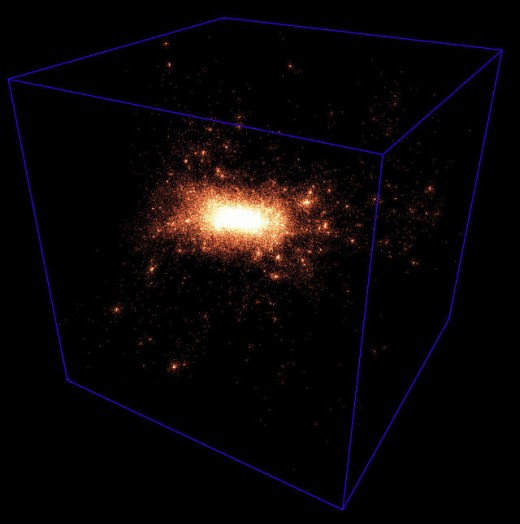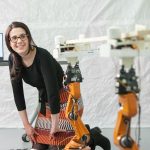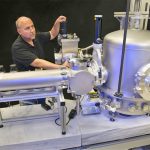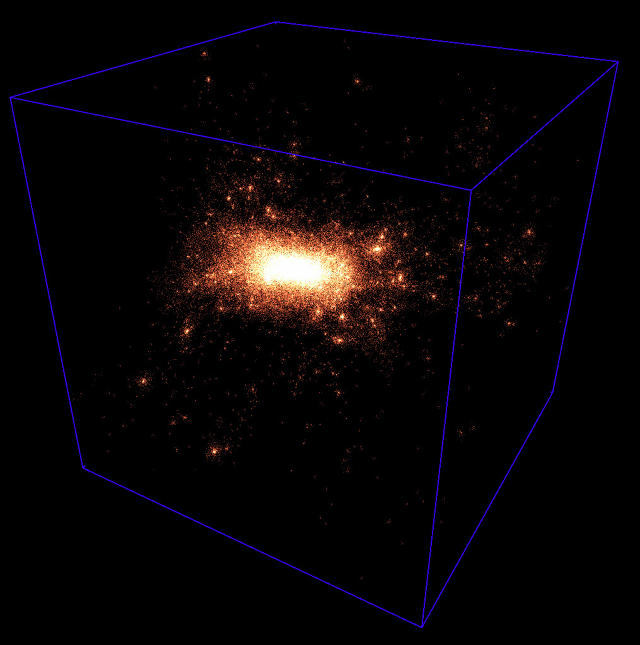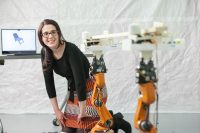To keep in mind the big Bang, Scientists Created This wonderful “synthetic Map”
Struggling to take into account a deluge of latest theories, scientists have created one of the vital excessive-decision photography of the universe ever made
December 1, 2015
Researchers are the use of excessive-powered laptop simulations to lend a hand remember some of the confusing phenomena in science—how the universe is expanding quicker than ever.
Ever due to the fact that 1929, when Edwin Hubble first theorized the enormous Bang, cosmologists had been onerous at work to define what it all manner. Over the direction of the twentieth century, scientists have come to appreciate that the universe is constructed from numerous galaxies made up of stars, planets, black holes, fuel, and dirt, as well as mysterious and invisible darkish subject with gravitational houses. extra recently, they have hypothesized that the enlargement is accelerating because of dark power, a little-understood cosmic pressure. The universe is estimated to be made up of roughly 70% dark energy, 25% dark topic, and simplest 5% customary subject, also called baryons (that features the galaxies themselves, Earth and we people).
regardless of this explosion of latest theories, cosmologists are nonetheless struggling to have in mind the true reasons of this accelerated p.c. of expansion. one way for them to arrive at cheap and informative conclusions in regards to the actual nature of the universe is during the software of sophisticated pc codes and expertise that simulates the cosmos. they can then evaluate such simulations to telescopic observations.
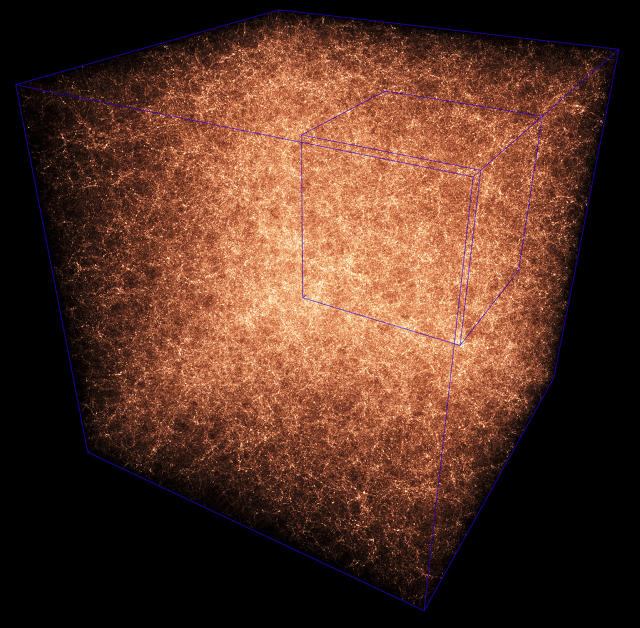
Now, a workforce of eight U.S. division of vitality researchers has run a cosmological laptop simulation that gives one of the vital greatest, high-resolution portrayals of the expanding universe ever displayed, called the Q Continuum Simulation. the results of their work had been outlined in a learn about subtitled “Harnessing the ability of GPU Accelerated Supercomputers,” printed in August by means of the Astrophysical Journal supplement series of the American Astronomical Society.
The distinctive simulation was created on the DOE’s o.k.Ridge national Laboratory’s Titan supercomputer—one of the vital world’s strongest that become to be had to researchers in early 2013— the use of a code developed on account that 2008, called the Hardware/Hybrid Accelerated Cosmology Code (HACC), also recognized for being the only cosmological simulation code that can run on more than one supercomputer structures global.
“We wanted to create a very exact synthetic map of the universe that we are able to use as a cosmic laboratory,” says Katrin Heitmann, an Argonne physicist who led the mission. “also, we wished to reply to questions about how the buildings that we look at if truth be told formed. From the observational information we’ve got presently, we arrange preliminary prerequisites that we placed on a pc. We ran this simulated adaptation and may compare the consequences to observations from telescopes.”

general, the simulation presentations the formation of construction over time and how gravity acts on dark matter, inflicting a clumping that results in so-referred to as halos, where galaxies kind. “this can be a very rich simulation,” Heitmann provides. “we will use the information to take a look at how galaxies are distributed, in addition to the fundamental physics of structure formation itself.”
“Now we now have an artificial sky map catalog of the galaxies that we are able to examine to what we see,” she notes, including that her crew was in a roundabout way in a position to simulate a lot of galaxies of much bigger quantity in a cosmologically precedent-setting excessive decision. the complete course of concerned ninety% of the supercomputer’s power and 1/2 1000000000000 particles that had been divided into dice-like pictures labeled as the “cosmic web,” exhibiting the distribution and evolution of darkish matter under the affect of dark power.
all of the Q Continuum sky maps are under deep prognosis and will be for some time. With its combination of huge volume and excessive mass resolution, the whole Q Continuum run claims to be a treasured resource for precision cosmological research of enormous-scale structure formation as well as a testbed—providing both theoretical predictions and synthetic sky catalogs for finish-to-end survey analyses. specifically, they’ll be compared to results from the dark energy Survey (DES) in addition to the big Synoptic Survey Telescope (LSST), two of the sector’s most thorough cosmological surveys.

As mentioned on the DES web page, this survey is probing the beginning of the accelerating universe, aiming to discover “the nature of dark power with the aid of measuring the 14-billion-year historical past of cosmic expansion with excessive precision. more than 120 scientists from 23 establishments in the united states, Spain, the United Kingdom, Brazil, and Germany are engaged on the mission. This collaboration has constructed and deployed an especially sensitive 570-megapixel digital digital camera, DECam. This new digicam has been set up on the Blanco four-meter telescope at Cerro Tololo Inter-American Observatory, high in the Chilean Andes.”
The LSST undertaking is at the moment under building. Plans are to “habits a ten-12 months survey of the sky so that it will ship a 200-petabyte set of images and information products with the intention to deal with one of the most most urgent questions in regards to the construction and evolution of the universe and the objects in it.” LSST comprises building the services, additionally positioned in Chile, to deal with a different optical imaging telescope with the intention to create “a very extensive box of view,” with “the ability to survey your entire sky in simplest three nights.”
(67)

